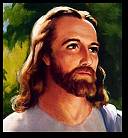
Numbers Count Two !

|

To continue our journey, the original first letter
 became the Greek
became the Greek
 about 800 years before Jesus, then turned into
about 800 years before Jesus, then turned into
 four centuries later before settling on the
four centuries later before settling on the
 symbol, around 200 years before Jesus. The Greek 'A' and 'B'
match our English to this day, but
relatively speaking, for this brilliant 'sound alphabet' idea
change came quickly in an explosion of new literature.
If you wish to look into these changes in
more depth, one interesting tangent can be found in the word "Nabataean",
which will give you hours of fascinating Internet searches.
symbol, around 200 years before Jesus. The Greek 'A' and 'B'
match our English to this day, but
relatively speaking, for this brilliant 'sound alphabet' idea
change came quickly in an explosion of new literature.
If you wish to look into these changes in
more depth, one interesting tangent can be found in the word "Nabataean",
which will give you hours of fascinating Internet searches.
On another, totally different branch, that 'first letter' we've been following
quickly
became:
 in Arabic, which might not seem to
relate to our bovine 'A',
until the Phoenician
in Arabic, which might not seem to
relate to our bovine 'A',
until the Phoenician is
put next to it then squeezed.
But proof of the close kinship and identical roots of Arabic
and Hebrew is best found if you first
click & listen
on the first Arabic
letter: is
put next to it then squeezed.
But proof of the close kinship and identical roots of Arabic
and Hebrew is best found if you first
click & listen
on the first Arabic
letter:
 _, then
click & listen to the first Hebrew
letter: _, then
click & listen to the first Hebrew
letter:
 _. _.
The Arabic "alif"
and the Hebrew "aleph" are nearly identical.
 So now we've identified three of the branches which grew from the Canaanite roots:
Arabic, Hebrew, and the inside-out Greek.
We would certainly be remiss to not mention one more.
As the sound alphabet came from Palestine, it should not be a
surprise the most similar to the original was the
Aramaic alphabet. What's important about the Aramaic language?
Well, besides having a lot of influence on Hebrew -
if you miraculously received a written note from Jesus or one was
actually found from the past, Aramaic is
the language it would be written in. Aramaic is the language Jesus
and his apostles spoke. If you look at the picture of the Last Supper, it
was actually the language of conversation at that table.
In this graphic,
the original Phoenician (Canaanite) alphabet
shadow looks like almost the exact same characters.
So now we've identified three of the branches which grew from the Canaanite roots:
Arabic, Hebrew, and the inside-out Greek.
We would certainly be remiss to not mention one more.
As the sound alphabet came from Palestine, it should not be a
surprise the most similar to the original was the
Aramaic alphabet. What's important about the Aramaic language?
Well, besides having a lot of influence on Hebrew -
if you miraculously received a written note from Jesus or one was
actually found from the past, Aramaic is
the language it would be written in. Aramaic is the language Jesus
and his apostles spoke. If you look at the picture of the Last Supper, it
was actually the language of conversation at that table.
In this graphic,
the original Phoenician (Canaanite) alphabet
shadow looks like almost the exact same characters.
This was the language of Jesus:


Besides our words and letters, another thing these language transitions reveal
is the source of our numbers.
Anyone who understands a clock using Roman numerals (or
reads the credits following a movie all the way to the end) comprehends there
was a time when people expressed quantities (numbers) using the exact same
letters as their alphabet. There was no separate symbol
for a particular numerical amount as letters were just as good
for showing quantity as they were for sounds and words.
Note the "M" means 1,000 in Roman
numerals, so when we reached the year 2000; all the movies made that year were signed with
a simple "MM".
(The conspiracy theory that the MM was
actually the signature initials of Michael Moore is simply not true.
 ) )
 Those of you who remember Roman numerals may look at the clock here and
wonder why the 'four' isn't shown as "IV".
If you answered "IIII" on your
6th grade test, it would be marked wrong. What gives? The "IIII" is
traditional now for clocks (except for modern cheap versions) because in
Roman times, "IV" was also symbolic for the god, Jupiter.
Putting god on the clock was apparently bad taste - but substituting a "IIII"
was an easy, reasonable solution.
Those of you who remember Roman numerals may look at the clock here and
wonder why the 'four' isn't shown as "IV".
If you answered "IIII" on your
6th grade test, it would be marked wrong. What gives? The "IIII" is
traditional now for clocks (except for modern cheap versions) because in
Roman times, "IV" was also symbolic for the god, Jupiter.
Putting god on the clock was apparently bad taste - but substituting a "IIII"
was an easy, reasonable solution.
Eventually, the Hebrew version of the Phoenician
'A'
character: evolved into the
Aleph:
evolved into the
Aleph: _,
the first character of the Hebrew alphabet used to this day. _,
the first character of the Hebrew alphabet used to this day.
But before that - about 600 years before Jesus - the Aramaic version
evolved into this: Then just prior to the birth
of Jesus that same symbol became: Then just prior to the birth
of Jesus that same symbol became:
 .
It is here where we find
the roots of our number '1', and while it would be easy to be skeptical as
to the accuracy of this path - the real proof is in the identical route taken
by 'B' and
the next number '2' we'll show you in a moment. .
It is here where we find
the roots of our number '1', and while it would be easy to be skeptical as
to the accuracy of this path - the real proof is in the identical route taken
by 'B' and
the next number '2' we'll show you in a moment.
Not understanding how numbers were used and quantities were represented in
that day often causes modern-day misunderstandings over certain symbols and characters.
For example, the quantity of six hundred, threescore, and six
may indeed be
highly significant, but this symbol:
'666' is not. That
 set of symbols did not even exist during Biblical times.
In the world of math, the concept of which column a digit was placed
or positioned as determining its actual value came many years later - not until
the invention of the number "zero", which was necessary to represent
a numerical column or character position with no value.
The very idea of discovering someone with an evil '666' written
or tattooed on them somewhere is - to be accurate - strictly Hollywood, but
to this day religious organizations unnecessarily resist any phone number or address
which contains that three digit sequence. This fear is carried to such
an extreme point by some that they note the 6th letter of the Hebrew alphabet is
usually equated with our 'W'. For them, this makes the Internet
- also known as 'WWW' - somehow suspicious.
If there is any symbol whatsoever to
be cautious of, it would be the original New Testament Revelations characters -
which were in Greek. The Greek quantity of six hundred, threescore, and six
(the number of the beast) looked like this:
set of symbols did not even exist during Biblical times.
In the world of math, the concept of which column a digit was placed
or positioned as determining its actual value came many years later - not until
the invention of the number "zero", which was necessary to represent
a numerical column or character position with no value.
The very idea of discovering someone with an evil '666' written
or tattooed on them somewhere is - to be accurate - strictly Hollywood, but
to this day religious organizations unnecessarily resist any phone number or address
which contains that three digit sequence. This fear is carried to such
an extreme point by some that they note the 6th letter of the Hebrew alphabet is
usually equated with our 'W'. For them, this makes the Internet
- also known as 'WWW' - somehow suspicious.
If there is any symbol whatsoever to
be cautious of, it would be the original New Testament Revelations characters -
which were in Greek. The Greek quantity of six hundred, threescore, and six
(the number of the beast) looked like this: . .
Now, before you get too bored with all this history and numerical paranoia, let's take the
preceding letter 'A' and
number '1' example and look at the next character in line.
By doing so we can quickly
prove the progressions shown above are not simply idle speculation - because the
transitions outlined are nearly identical for the next letter and number.
Consider now; other than food (represented by our cow character), what symbol would
be next in importance to people 5,000 years ago ? If the phrase
"food and shelter" comes to mind you would be precisely correct.
As astounding as it may sound, the first two letters in our alphabet mean essentially
the same thing as "food and shelter".
The Egyptian drawing of a dwelling (shelter) looked like
this: while the Sumerian (Iraq) character was drawn
as:
while the Sumerian (Iraq) character was drawn
as: .
Then about 3,500 years ago the Hebrew version was quite similar: .
Then about 3,500 years ago the Hebrew version was quite similar:
 which a few centuries later evolved into
this:
which a few centuries later evolved into
this: .
So when the Phoenicians created their all-important new sound alphabet,
the symbol adopted for their second letter looked like
this: .
So when the Phoenicians created their all-important new sound alphabet,
the symbol adopted for their second letter looked like
this: .
From this, came the Aramaic second letter which eventually progressed
from: .
From this, came the Aramaic second letter which eventually progressed
from: to:
to: and this then influenced the Hebrew second letter,
beyt:
and this then influenced the Hebrew second letter,
beyt: .
It's pretty easy to see the roots of our number:
2. .
It's pretty easy to see the roots of our number:
2.


The progressive framework of letters ...
|
|